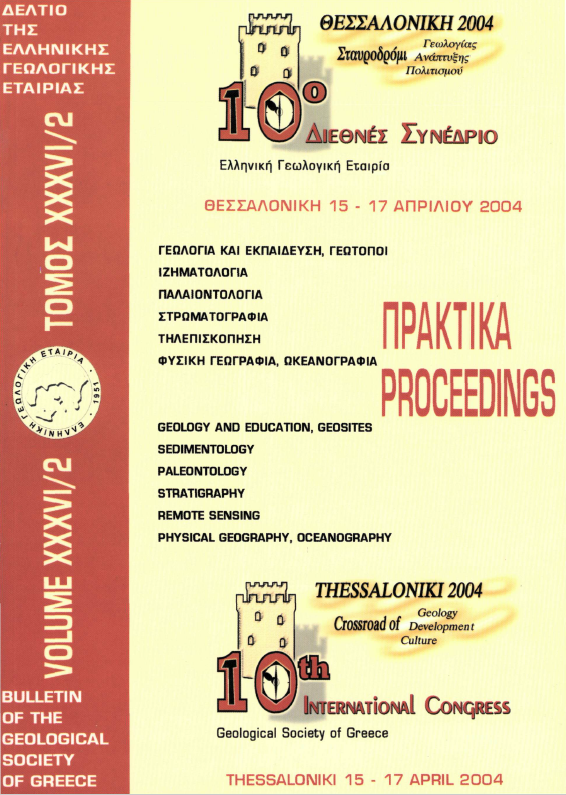UPPER CRETACEOUS TRANSGRESSION OVER THE OPHIOLITES OF NORTHERN PINDOS
Résumé
At the ophiolithic overthrusted masses of Northern Pindos, east of Katara, outcrops of limestones are observed. Until now these outcrops are interpreted by tectonic inclusions inside the secondary tectonic contacts. Detailed analysis of these limestones showed that they are remainings of transgressions their age determined by the microfauna as upper Campanian - early Maastrichian. The limestone series ends upwards in a karstic surface supporting doleritic lava flows with essential thickness. In place Tragopetra we can observe that these lavas clearly intrude in the caves of the paleokarst. At the same section (Tragopetra), over this lava formation, the basic conglomerate (Auversian) of the mesohellenic sediments is found. Transgression of this age whas unknown until now in Greece, but is well known in South Anatolia and Near East. An important outcome of our research is that there is no ocean trench before the 806 overthrust but land with karstification of the limestones is emerged instead. The Pindos ophiolites overthrust is related to recent land creation and developed under epiglyptic conditions. Nature reality often differs to any models humans may imaginate!
Article Details
- Comment citer
-
Αργυριάδης Ι. (2018). UPPER CRETACEOUS TRANSGRESSION OVER THE OPHIOLITES OF NORTHERN PINDOS. Bulletin of the Geological Society of Greece, 36(2), 802–807. https://doi.org/10.12681/bgsg.16820
- Rubrique
- Stratigraphy

Ce travail est disponible sous licence Creative Commons Attribution - Pas d’Utilisation Commerciale 4.0 International.
Authors who publish with this journal agree to the following terms:
Authors retain copyright and grant the journal right of first publication with the work simultaneously licensed under a Creative Commons Attribution Non-Commercial License that allows others to share the work with an acknowledgement of the work's authorship and initial publication in this journal.
Authors are able to enter into separate, additional contractual arrangements for the non-exclusive distribution of the journal's published version of the work (e.g. post it to an institutional repository or publish it in a book), with an acknowledgement of its initial publication in this journal. Authors are permitted and encouraged to post their work online (preferably in institutional repositories or on their website) prior to and during the submission process, as it can lead to productive exchanges, as well as earlier and greater citation of published work.



